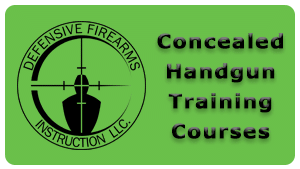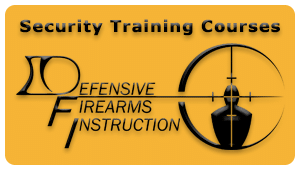Carrying In A Vehicle
Since a large portion of our day is spent in our vehicles traveling to and from work, it’s worth mentioning a few key points for carrying in our vehicles as well.
One of the first things to cover is your method of carry and whether or not it remains effective when you are in your vehicle.
For example: if you carry at the 4 o’clock position, when you get in your vehicle your seat belt will be hindering you from accessing your firearm.
Your firearm will also be between you and the seat which will again hinder access.
Some people have told me in the past that they simply remove the firearm and keep it on the seat while driving.
This may seem like a simple solution; however, I have a few issues with this.
For starters, do you have your concealed permit?
It’s not uncommon to have to hit your brakes harder than usual when someone unexpectedly enters your lane or brakes too hard in front of you, and if your firearm was on the seat, it’s now on the floorboard or potentially under the seat where a Police Officer could realistically make an argument that the firearm is now concealed.
Another potential issue to consider would be the inability to access that firearm to defend your life if that same situation happened and the firearm ended up under the seat.
Perception is also a factor that we need to keep in mind.
If someone sees a firearm on my seat or I get pulled over with a firearm openly on the seat, it could potentially worsen my immediate situation.
A reasonable solution to access a firearm while in a vehicle would be a vehicle-mounted holster.
These are a great idea that allows someone to have access to a firearm relatively quickly while still maintaining the safety aspect by covering the fire control group.
It is easy to get rushed and inadvertently leave the firearm in the vehicle, however; therefore we need to stay mindful if we are using this type of holster.
Unless there is access to a vehicle-mounted safe, it is not recommended to leave a firearm in a vehicle.
A common misconception is that vehicles offer a fair amount of protection and that is simply not true.
It takes nothing more than a pipe or a tire iron to break a window and just a few seconds to reach in and take whatever is in sight, and the firearm is a pretty inviting target.
There is also something to be said for not telegraphing the fact that there could be a firearm in your vehicle, such as the “Molon Labe” stickers or bumper stickers portraying your love of freedom and guns.
I get that people like to express themselves with their bumper stickers and personalization of the back end of their vehicle; I personally recommend the opposite, however.
Take a second and think about your vehicle.
Now picture someone walking through a parking lot searching for a vehicle with a high probability of having a firearm in it.
Now, is your vehicle the one in that parking lot that is going to be picked out?
If so, you may want to consider dialing back on the vanity stickers and expression.
There’s nothing wrong with this, but with discretion comes a very distinct advantage.
Another big topic I get a lot of questions about is how to handle a traffic stop while carrying a firearm.
My first recommendation in this regard is to avoid keeping your firearm in the glove-box of your vehicle, as this is usually where people also keep the registration and insurance cards that the Police Officer will ask for.
Once again, perception is everything, and a quick way to turn a routine traffic stop into a potentially negative interaction with Law Enforcement would be to open the glove box and have a handgun fall out or have the Law enforcement officer think that you are trying to directly access the firearm while you are actually trying to access what they are asking you for.
What I usually recommend is to simply add your concealed handgun permit or license in with the documentation you are giving to the officer.
It is important to note that not all states require you to voluntarily disclose that you have a concealed firearm on your person however it is a professional courtesy.
If the officer asks you then it would be advisable to be truthful and comply with any and all requests made by a sworn Law Enforcement Officer.
Adding your concealed handgun permit in with your license and registration will also prompt the officer to ask you if you have a firearm with you.
This is a better way to inform the officer that you have a firearm than by looking at them at the beginning of the stop and saying “I have a gun”.
This could be taken very differently than how it was meant to be taken.
The last thing you want is to put an officer on edge during a traffic stop and keep in mind that you don’t know what call that Police Officer just came off of.
It is also advisable to do your research before traveling over state lines with a firearm.
Playing it safe is always going to be the best option when traveling.
If you are traveling through a state that does not recognize the validity of your concealed handgun permit, the most advisable option would be to keep the firearm unloaded and locked in a hard case outside of the passenger compartment of the vehicle.
It is also advisable to store the ammunition separately from the firearm.
If you decide to look up which states you have reciprocity with, or any laws or regulations online, it is imperative that you only trust .gov websites.
These sites are going to give you the most reliable, accurate, and up-to-date information.
As always, check with and always act in accordance with your local laws and regulations.



